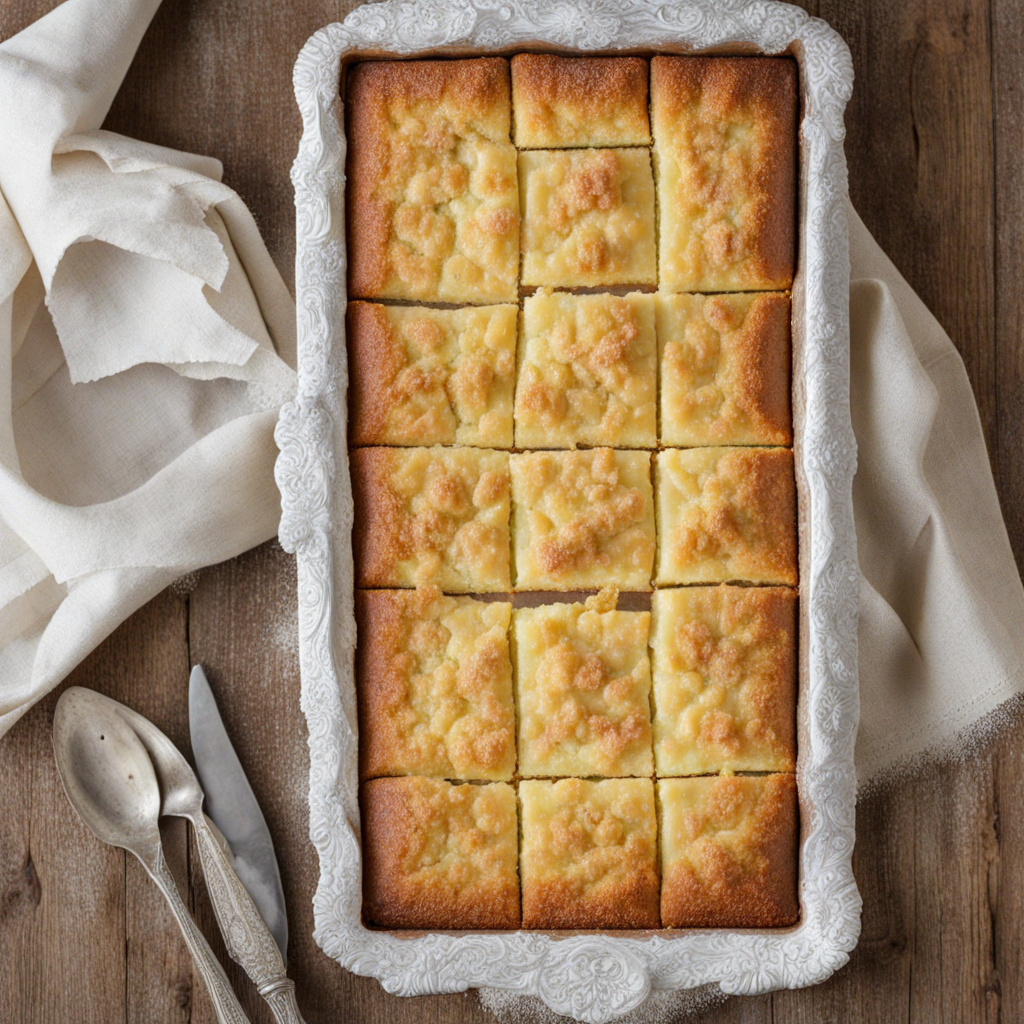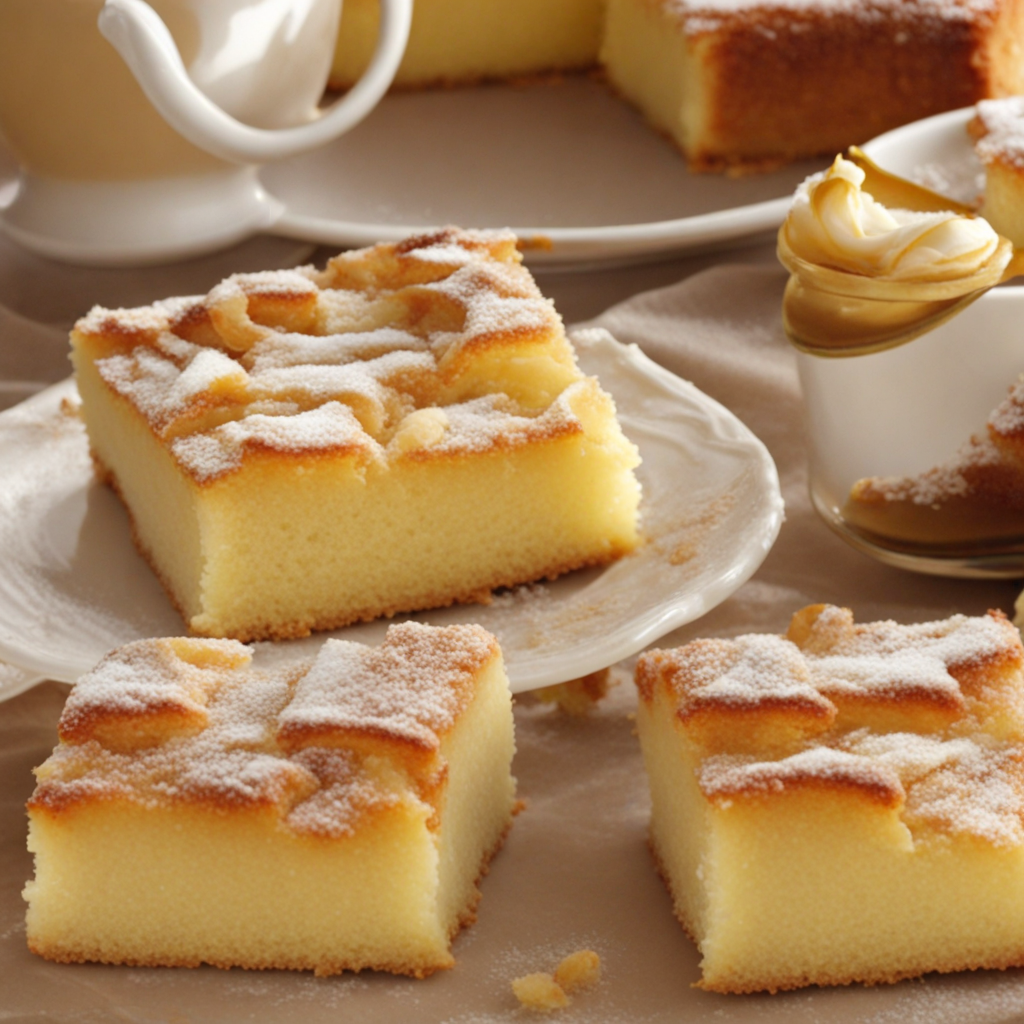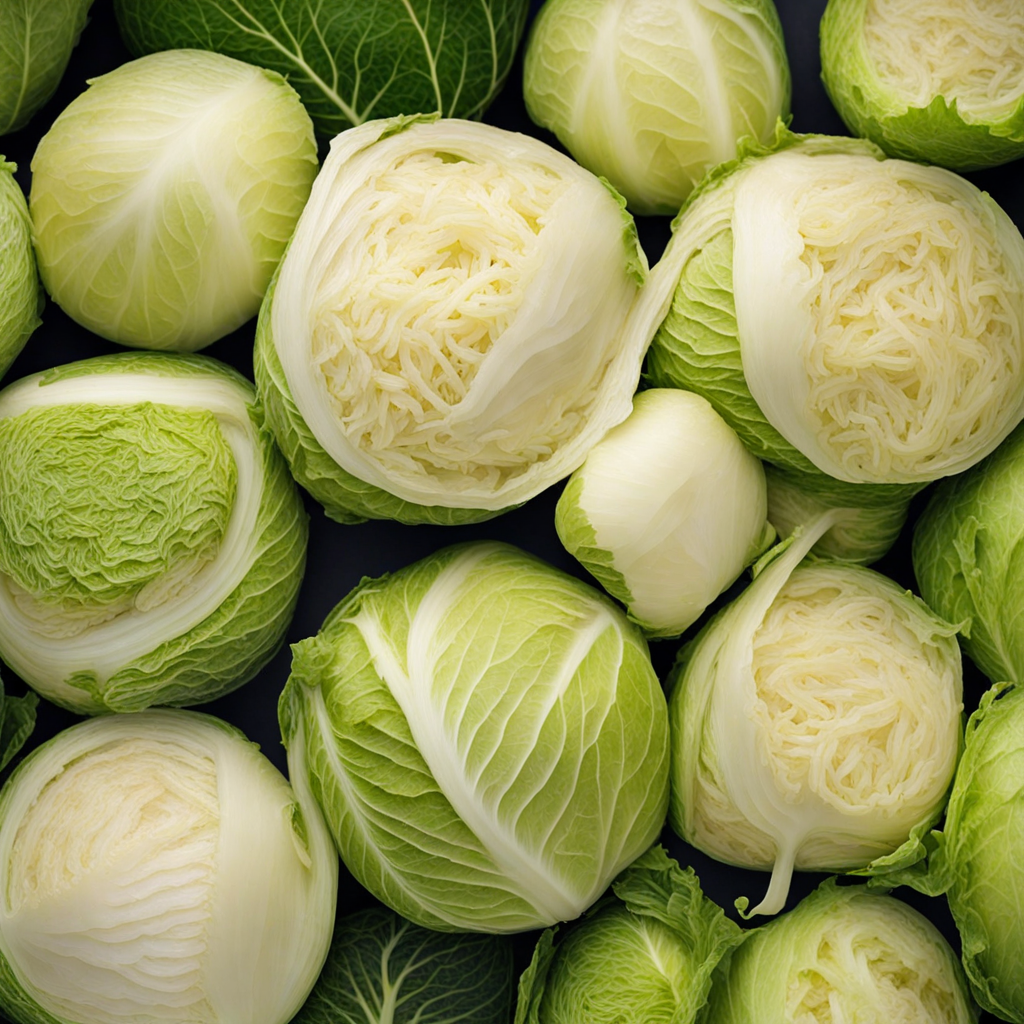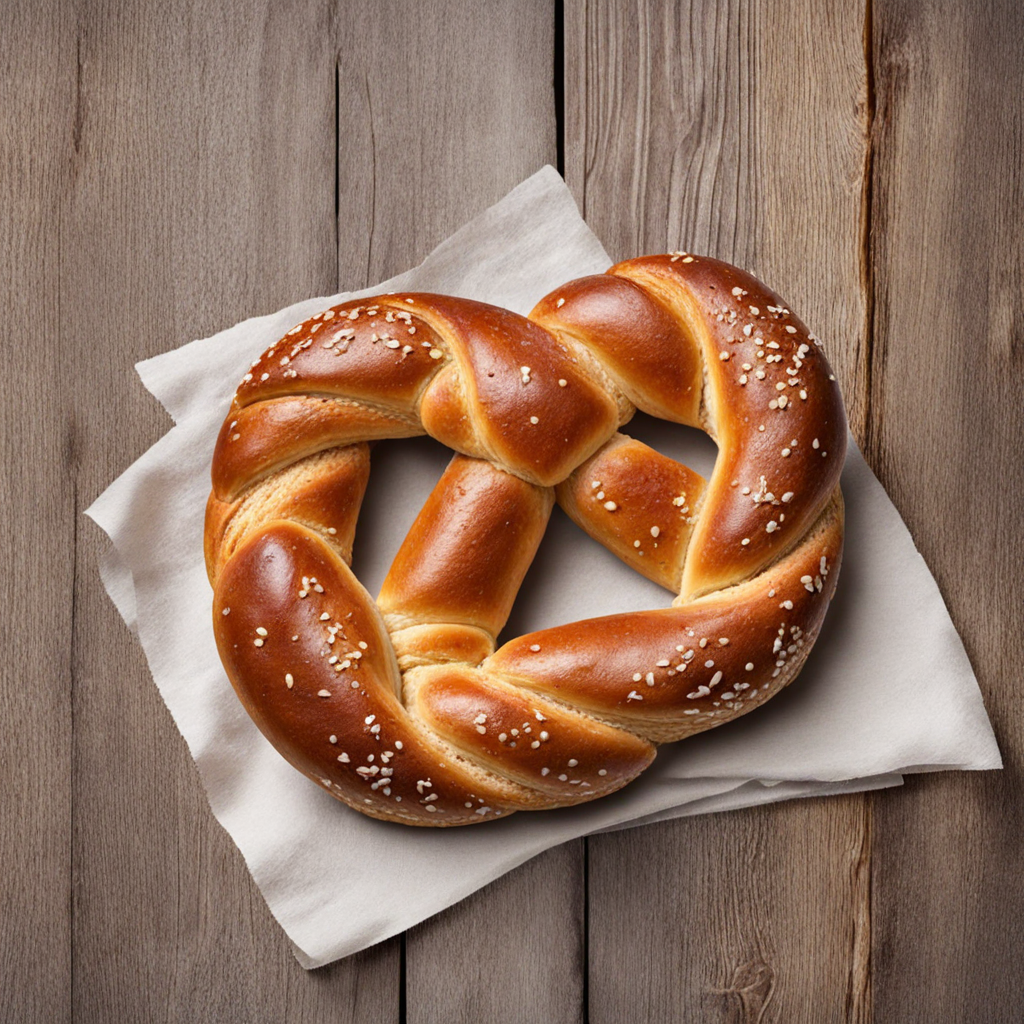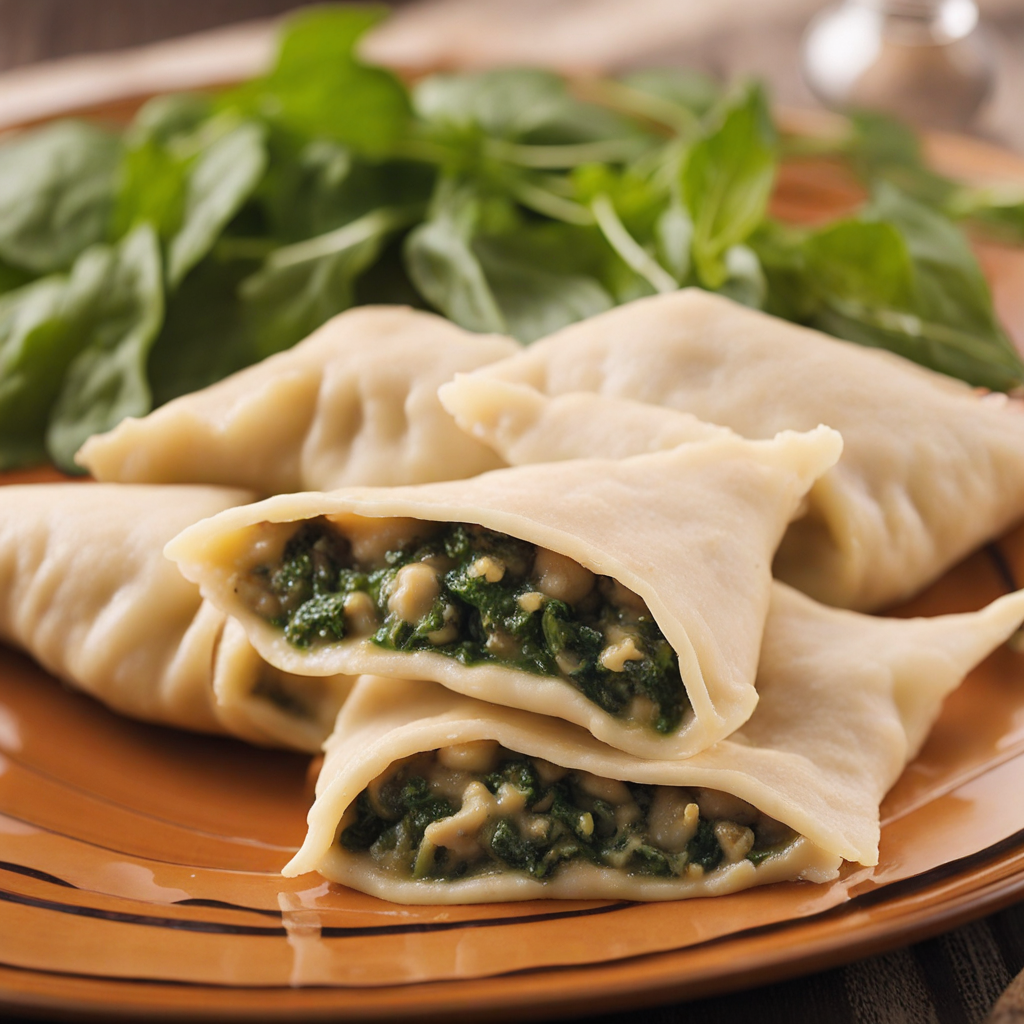Butterkuchen
Butterkuchen, often referred to as "butter cake," is a delightful German treat that captures the essence of comfort food with its rich flavor and soft texture. This cake is typically made with simple ingredients, including flour, butter, sugar, eggs, and yeast, which come together to create a tender crumb that melts in your mouth. The dough is usually left to rise, allowing it to develop a lightness that contrasts beautifully with the buttery topping. One of the standout features of Butterkuchen is its indulgent layer of melted butter and sugar that is poured over the top before baking. This topping caramelizes slightly as it bakes, creating a golden, glossy finish that enhances the cake's overall flavor profile. Often, the cake is sprinkled with sliced almonds or coarse sugar, adding a delightful crunch that complements the soft, pillowy cake beneath. Each bite offers a harmonious blend of sweetness and richness, making it an irresistible treat for any occasion. This cake is traditionally enjoyed during coffee time in Germany, making it a popular choice for gatherings and celebrations. Served warm or at room temperature, Butterkuchen pairs perfectly with a hot cup of coffee or tea, inviting you to savor each mouthful slowly. Whether you're enjoying it as a mid-afternoon snack or as a dessert after a hearty meal, Butterkuchen is a delicious way to experience a slice of German culinary tradition and discover a new favorite flavor.
How It Became This Dish
The Sweet Evolution of Butterkuchen: A Culinary Delight from Germany Origins of Butterkuchen Butterkuchen, which translates to "butter cake" in German, is a rich, moist cake that has become a beloved staple in German bakeries and homes alike. Its origins can be traced back to the 19th century, reflecting the broader trends of German baking that emphasized simplicity, quality ingredients, and a deep-rooted connection to local traditions. The exact origins of Butterkuchen are somewhat murky, as many traditional German recipes were passed down orally rather than documented in written form. However, it is widely believed that Butterkuchen emerged in regions like Westfalen (Westphalia) and the northern parts of Germany, where dairy farming was prevalent. The use of butter, a key ingredient, highlights the importance of dairy in German cuisine, particularly in areas where rich pastures allowed for high-quality butter production. Cultural Significance Butterkuchen is more than just a dessert; it is an emblem of German hospitality and celebration. Traditionally served at gatherings, festivals, and family celebrations, this cake encapsulates the warmth and comfort of home-cooked food. Its simplicity allows for versatility, making it an ideal accompaniment to coffee or tea, particularly during afternoon gatherings, known as "Kaffeeklatsch." The cake's preparation often involves family members coming together, making it a communal activity that fosters bonds and creates cherished memories. As German immigrants spread across the globe, especially to the United States in the 19th and early 20th centuries, they brought their culinary traditions with them. This migration contributed to the popularity of Butterkuchen in diasporic communities, where it became a symbol of cultural identity and continuity. Ingredients and Preparation Traditionally, Butterkuchen consists of simple ingredients, including flour, sugar, yeast, eggs, milk, and, of course, plenty of butter. The dough is generally enriched with additional butter both in the mixing process and as a topping before baking. This results in a cake that is incredibly moist and rich, with a tender crumb. The preparation of Butterkuchen typically begins with the creation of a yeast dough, which is allowed to rise until it has doubled in size. Once the dough is ready, it is rolled out into a rectangular shape and placed in a baking pan. A unique aspect of Butterkuchen is the characteristic dimpling of its surface, which is achieved by pressing down on the dough with fingers after it has risen again. This not only adds a decorative element but also creates pockets for the buttery topping. The topping is often made of melted butter mixed with sugar and sometimes cinnamon or vanilla, poured generously over the dimples. This topping caramelizes during baking, creating a slightly crunchy crust that contrasts beautifully with the soft, moist interior. Some variations of Butterkuchen include toppings of fruit or nuts, adding additional flavors and textures. Development Over Time As Germany transitioned through various cultural and economic phases, including industrialization and the two World Wars, the recipe for Butterkuchen adapted as well. During the industrial revolution, the availability of commercial yeast and the advent of modern baking techniques made it easier for home bakers to prepare this cake. Post-World War II, Germany experienced a cultural revival, and traditional recipes like Butterkuchen saw a resurgence in popularity. Bakeries began to experiment with different variations, incorporating local ingredients, seasonal fruits, and new flavor profiles. In regions like Bavaria, for example, Butterkuchen might be topped with seasonal fruits such as apples or cherries, reflecting the agricultural bounty of the area. In contemporary Germany, Butterkuchen remains a beloved classic, often found in bakeries and cafes across the country. It has also gained international recognition, with recipes appearing in cookbooks and on food blogs worldwide. The cake's adaptability has contributed to its enduring appeal, allowing it to evolve with changing tastes while still honoring its roots. Modern Variations and Global Influence While traditional Butterkuchen is a yeast-based cake, modern interpretations have emerged that reflect contemporary baking trends. Some bakers have begun to experiment with gluten-free versions, using alternative flours like almond or coconut flour, while others have introduced vegan versions that substitute butter with plant-based alternatives. In addition to variations in ingredients, Butterkuchen has also found its way into fusion cuisine. Many bakeries in urban areas are now offering innovative takes on this classic, incorporating flavors from different culinary traditions. For instance, a Butterkuchen might be infused with spices from Middle Eastern cuisine or layered with tropical fruits, showcasing a blend of cultural influences. Conclusion Butterkuchen stands as a testament to the rich tapestry of German culinary history, embodying simplicity, comfort, and community. Its evolution over time reflects the adaptability of traditional recipes, allowing them to flourish in new contexts while remaining rooted in their origins. As this delightful cake continues to be baked and enjoyed around the world, it serves as a delicious reminder of the connections we share through food, transcending borders and generations alike. Whether enjoyed during a casual coffee break or at a festive gathering, Butterkuchen remains a beloved symbol of German culture, inviting everyone to savor a slice of history.
You may like
Discover local flavors from Germany


